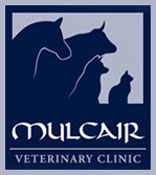The world of veterinary medicine is moving rapidly forward. We can diagnose and treat conditions in all our dogs with more speed and accuracy. Our elderly patient benefits most from these developments.
Owner vigilance is a most important aspect in the process of identifying problems in your aged animals and in conjunction with regular examination and screening by your vet, diseases and conditions of elderly patients can be controlled and treated very successfully.
If you have any queries or questions, or if you spot any changes in your elderly pet, don’t hesitate to Contact Us or to make an appointment to see us.
When is My Pet Dog a Senior?
Dogs reach a senior stage at different ages, depending on their size and breed:
- Small Breeds – over 8 years
- Medium Breeds – over 7 years
- Large Breeds – over 7 years
- Giant Breeds – over 5 years
Why is Owner Vigilance important in the Senior Dog?
These are a few examples of how owners can help in the early diagnosis of conditions and diseases by looking out for subtle changes in their elderly pets and then reporting such changes to their vet.
- Drinking more water in the recent past is one of the main and obvious signs that something is wrong in our pets. Many conditions (such as Diabetes and kidney disease) have increased thirst and frequency of urination as one of their clinical signs.
- Weight Loss: Elderly pets lose weight due to inefficiencies in the digestive tract, painful gums and decayed teeth and various conditions that cause muscle breakdown.
- Coughing: Coughing may be something simple like Kennel Cough or more importantly in elderly dogs- a sign of heart disease.
- Lumps and Bumps: Owners are almost always the first to notice lumps on their pets coat or underlying tissues.
- Other signs such as vomiting, diarrhoea and inappetance etc are more obvious signs of a problem.
What will a vet look for in an elderly dog?
A vet will use owner’s observations and in conjunction with regular elderly patient examination (often with screening of blood samples) he or she will be able to pinpoint early signs of disease.
- Teeth: Regular dental checks with tartar descaling and polishing can significantly extend the life of your animal’s teeth. Look out for painful eating and smelly breath.
- Heart: Obesity is a contributing factor to heart disease. Early signs for owners are exercise intolerance and soft coughing and if left untreated can lead to episodes of breathlessness and collapse.
- Liver and kidney Disease: Many factors (infectious, toxic, auto-immune etc) can lead to liver and kidney problems. Look out for increased thirst, increased urination and bloated abdominal cavity. Simple blood screening tests in elderly patients and in all animals prior to surgery can indicate and monitor these problems in our pets.
- Lameness: This is a most obvious clinical sign for owners. It can indicate arthritis, ruptured ligaments and spinal problems. There are many anti-inflammatory agents and supplements that can control pain and increase lubrication in our elderly dogs especially. Again blood screening tests can reveal a dog’s suitability for such treatment.
- Reproductive System: It is always better to have your animals neutered but often in later life an entire female can suffer from a condition called ‘pyometra’, or a build up of pus in the womb. It is a serious condition. Owner’s vigilance is vital- look out for dull, depressed females, drinking lots of water soon after her season. Older males suffer from prostatic cancer which may cause them difficulty in passing motions.
- Senility (Circulatory System): Patients can suffer from circulatory defects- sometimes causing a lack of blood supply to vital organs and structures. These can be treated successfully on occasions.
- Skin: Like any other organ skin will malfunction and produce tumours like any other structure within the body. Early examination of any growth can aid a swift and positive outcome.
Your elderly pet is a loyal and long term friend. Together we can make their latter years happy and pain free while also increasing their life expectancy.

